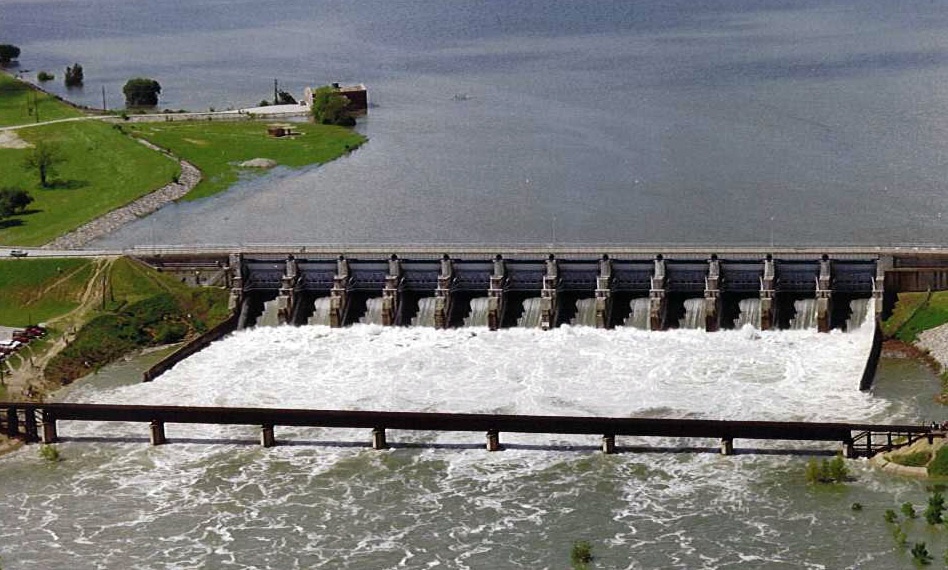Op-ed: How Funders Can Support Clean, Reliable Water for All—not just the privileged

It’s time to redesign water systems in the United States to meet the needs of all people and communities—not just the privileged. Our present water system structure leaves many, particularly poor people, at risk of significant health and safety dangers. Today, amid a public health emergency, millions of U.S. residents do not have clean water, and race is the strongest predictor of whether someone has running water at home.
According to DigDeep and the US Water Alliance, people of color lack access to safe and affordable drinking water at much higher rates than white people. They also are most likely to be impacted by floods and droughts, which can disrupt water systems.
The crisis facing U.S. water infrastructure is of our own making. Federal funding for water infrastructure has plummeted since the 1970s and now accounts for just 4% of all water-related capital investment. The majority of water infrastructure funding currently comes from local water rates and state funding, which often reinforces underinvestment in poor communities.
With population growth and climate change, the need for these investments is even greater than expected—but the money is just not there. Or more accurately, our elected leaders have failed to appropriate sufficient funds to meet this core human need.
The public is increasingly aware of this failure. Even as voters called on Congress to pass new COVID-19 relief and recovery measures, public support for immediate water investments remained high. Recent polling by the Water Hub at Climate Nexus found that 79% of U.S. voters supported assistance for families struggling to pay water bills, and 77% supported investing in preparation for future floods and droughts. By a 2-to-1 margin, voters want the federal government to immediately invest more in water infrastructure.
Philanthropic organizations also can and should do more to help ensure all U.S. residents have access to safe, affordable water. Foundations engaged in water equity work are on this journey together, though some are at different stages. To help forge a path, our foundations recently joined with more than 240 community groups, utilities, cities, and other organizations in supporting four core principles to guide the reimagining and rebuilding of our nation’s water systems—and rate structures—so that all families have what they need to be healthy and live with dignity. The principles include,
1. ensuring water is reliable and safe for all,
2. strengthening utilities of all sizes,
3. closing the water access gap, and
4. fueling economic recovery through water investments.
As freshwater funders, we offer these recommendations as an invitation for collaboration with other funders who believe all people deserve clean water.

Support Community Power
Grassroots groups, many of which are led by and serve people of color, generate most of the community power that is advancing equitable water policies. Building on years of organizing and relationship building, groups like We the People of Detroit, Community Water Center, the Coalition for Environment, Equity, and Resilience, and Texas Living Waters are turning water practices grounded in the experiences of their neighbors into state and local policies—from the human right to water, to how local water boards function and respond to residents’ ideas. To build systems that result in better outcomes and solve problems, the philanthropic sector could provide more and sustained funding for community organizing and advocacy groups led by Black, Indigenous, and other communities of color, as well as people in lower-income neighborhoods.
Fill Water Data Gaps
Limited state and federal data on water supply, demand, and affordability make it more difficult for communities to make the case for what they need and design solutions that get at the heart of water injustice and climate emergencies. It’s time to fill these gaps and provide data in easy-to-use formats that are disaggregated by race, gender, and other demographics. These projects can range from the local, such as a recent study of water rates in northeastern Illinois, supported by the Charles Stewart Mott Foundation, to national projects, like PolicyLink’s National Equity Atlas and First Street Foundation’s Flood Factor.
Provide More Resources to Water Systems
Water systems of all sizes are struggling financially amid the COVID-19 pandemic. Water utilities are incurring additional personnel costs to manage critical operations, while simultaneously losing revenue due to reduced water usage and nonpayment of bills. Nationally, the pandemic will cost water utilities at least $12.5 billion, according to the National Association of Clean Water Agencies.
Over the last few months, organizations like Rural Community Assistance Partnership, as well as the US Water Alliance and California Municipal Utilities Association, have been working to build partnerships among their member utilities, communities, and the federal government to mitigate lost revenue and pull through the pandemic together. States like New Mexico, Arkansas, and California are looking at the consolidation and regionalization of water systems to help enhance their financial and operational durability.
Funders have a role, too, from advocating for long-needed infrastructure upgrades and local job creation to supporting training programs and leadership development that help water systems increase maintenance capacity, adopt new technologies, and respond more adeptly to customers’ water challenges and needs. While the philanthropic sector can do more, we feel strongly that it is the government’s responsibility to provide the funding necessary to operate, maintain, and modernize water infrastructure.
Expand and Rethink Water Infrastructure
In addition to supporting long-needed upgrades, we also can help position and expand the use of nature-based infrastructure as an equally valued part of our water systems. Increased use of “green infrastructure” also will provide much needed economic stimulus.
Rivers, lakes, and groundwater are the primary sources of drinking water in the U.S., and they need protection as a changing climate causes worsening droughts and floods. By employing nature-based infrastructure, such as green streets that capture stormwater or floodplain projects that protect homes and restore ecosystems, we can enhance community resilience, create more local jobs with career pathways and bring back nature for future generations to enjoy.
There are good reasons for doing this in the near term, through increased state and federal spending. In its recent “Rivers as Economic Engines” report, American Rivers offered a framework for equitable investment in water and river restoration as a path to new jobs and community resilience.

From California to Texas and the Great Lakes to the Atlantic Coast, our water systems need attention in all these areas. Our communities need improvements today; delay will only make problems more expensive. The prosperity of future generations is truly dependent on the development of modernized and equitable water systems that offer reliable quality and quantity.
If we focus on these four recommendations, we can jump-start progress that empowers the leadership of those communities most affected by unsafe, unaffordable, or unreliable water. We can start to undo structural inequities that are at the center of U.S. water systems today and lay the foundation for a just water future.
Randall Kempner is CEO of the Austin-based Cynthia and George Mitchell Foundation. Allison Harvey Turner is CEO of the Sacramento-based Water Foundation. Ridgway White is president and CEO of the Flint, Michigan-based Charles Stewart Mott Foundation.

NEWS
Hide Full Index
Show Full Index
View All News